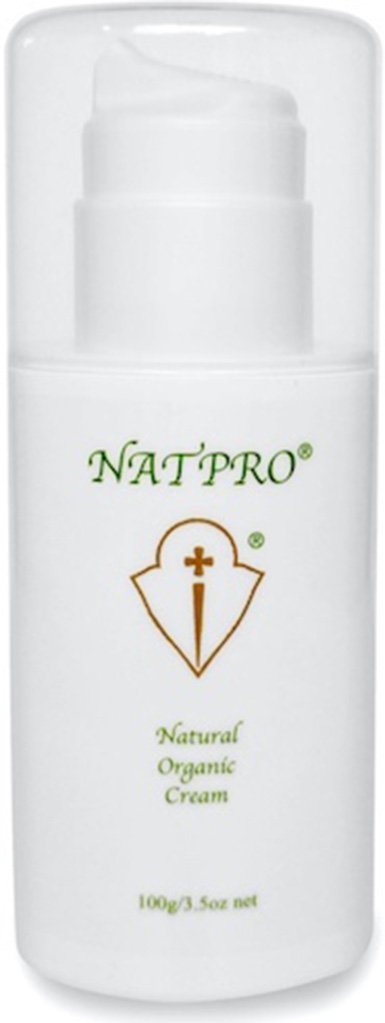Fibroid treatment
As a fibroid treatment progesterone's effectiveness stems from its powerful counter-estrogenic properties. Hormone imbalances induced by environmental poisons, especially the 'xeno-estrogens', are considered by some authorities to be a likely cause of fibroids.
Fibroids are benign, usually painless tumours found in the uterus, made of muscle and connective tissue. The cause is unknown. Starting as microscopic bodies, they can grow to the size of a grapefruit or larger, sometimes filling the entire uterus.
Pregnancy reduces the risk of new ones forming.
Estrogen stimulates the growth of fibroids. Matrix metalloproteinases (MMP) are also implicated in their formation. Estrogen also maintains secretion of MMPs, so a vicious cycle is started.
Progesterone suppresses estrogen. The high level of progesterone in pregnancy is the probable reason pregnancy is protective.
Matrix metalloproteinases are enzymes that break down protein. They play a role in the breakdown of endometrial tissues at the end of the menstrual cycle. If they are over active, as would be the case with an excess of estrogen in the body, (estrogen stimulates its production), the result is a pathological reaction such as inflammation and excessive bleeding in the uterus. A high level of MMPs can lead to both rheumatoid and osteo-arthritis, cirrhosis and cancer.
Progesterone suppresses matrix metalloproteinases.
From 15 to 20% of reproductive women develop fibroids. But they occur most frequently in women from the mid thirties on, affecting 30 to 40%. A time when oestrogen levels are high but progesterone levels are declining. They often cause heavy, irregular, sometimes painful periods. It is known that after menopause with the drop in the estrogen level they disappear.
Supplemental progesterone, by suppressing both oestrogen and MMPs, is often effective at reducing fibroids. If not too large, they are gradually absorbed back into the body, taking from three to twelve months to do so.
As a fibroid treatment progesterone therapy often helps to prevent the heavy bleeding and pain if present.
Current medical treatment is a hysterectomy, uterine artery embolisation (UAE) or laparoscopic myomectomy (LM) to remove them. Anti-inflammatory drugs are used for the pain and oral contraceptives to control the heavy bleeding.
Some symptoms are... fullness or pressure in the abdomen, pain with periods, gas, frequent urination, heavy bleeding, often with clots.
Additional information
Progesterone: Use 100-200mg of progesterone per day. This is equivalent to 3-6ml of Natpro cream.
Nutrients: Take daily: 400-1000mg vitamin E; 5-10ml Omega 3 fish oil or 15-60ml flax oil; 10000-25000 IU vitamin A; vitamin B complex as directed on label; 1000-5000-mg vitamin C; 1000mg bioflavonoids; 15-50mg zinc; 500mg L-arginine; 500mg L-lysine. If anaemic an organic form of iron should be taken. There are many natural pain killers which have no adverse side effects which could be used to help: 2.5gm-10gm MSM (methyl sulphonyl methane); 500-1000mg DL phenylalanine. (Do not take supplemental phenylalanine if you are pregnant, suffer from phenylketonuria, diabetes or taking MAO inhibitor drugs.) The following herbs also help: astragalus, dong quai, garlic, red clover and nettle. The following essential oils can help: lavender, frankincense, peppermint, rose, rosemary and thyme. Add one drop of oil to 5ml (1tsp) of carrier oil and rub over painful areas.
Diet: The Metabolic Typing Diet is an excellent means of obtaining lasting health. The diet is the product of many years of detailed research and looks at the many ways the body metabolises food. It is based on the obvious but hitherto little understood fact that each individual has a unique metabolism. 'Metabolic Typing', as the name suggests, is an analytical process that defines each individual's unique nutritional requirements by determining how they metabolise food and categorising a person according to their needs.
Small frequent meals are often a help. After a large meal there is a temporary drop in the level of progesterone, due to an increased metabolic clearance rate of that hormone, so symptoms can become worse for a while. Food should be natural, unprocessed and if possible organic and include both protein and fibre, particularly the gel forming fibre such as apple pectin, guar gum and oat bran as these have been shown to stabilise blood sugar, as has unrefined buckwheat.
As a substitute for sugar use xylitol, isomalt or stevia. Stevia is a natural extract from the plant Stevia rebaudiana, a member of the daisy family, native to Paraguay. The extract is 200-300 times sweeter than sugar, but has none of the drawbacks and does not affect blood sugar in any way. The fresh or dried leaves are easier to use and taste better. Xylitol and isomalt are sugar alcohols, which look and taste like sugar, but are metabolized by the body at a much slower rate, they have respectively 2.4 and 2.1 calories per gram. A beneficial affect is their ability to reduce pathogenic bacteria and to act as a prebiotic for the good bacteria, a drawback is the high cost. If used in large quantities they can cause flatulence and have a laxative affect.
Avoid: All forms of oestrogens, as this may stimulate fibroid growth; sugar and artificial sweeteners; all forms of processed foods containing sugar; refined grains, particularly wheat; carbonated drinks, including the 'diet' drinks; fruit juices; biscuits; cakes; white breads; canned foods; sauces; sweets; large meals; oxidised fats, (ie margarine, refined oils, saturated fats and fried foods, in particular fried animal protein); pasteurised, homogenised milk; stimulants such as alcohol, coffee, black tea.
To find out more about progesterone therapy in general and how it benefits health issues other than as a fibroid treatment, please click here.

